- Document History
- Subscribe to RSS Feed
- Mark as New
- Mark as Read
- Bookmark
- Subscribe
- Printer Friendly Page
- Report to a Moderator
- Subscribe to RSS Feed
- Mark as New
- Mark as Read
- Bookmark
- Subscribe
- Printer Friendly Page
- Report to a Moderator
Contact Information
Competition Year: 2016
University: Cardiff University
Team Members (with year of graduation): Jonathan James Rees (2016)
Faculty Advisors: Dr Alastair Clarke, Mr Ryan Marks
Email Address: reesj36@cardiff.ac.uk
Country: UK
Project Information
Title: Design and development of a computer controlled shifting system for a combustion Formula Student car
Description:
The Pneumatic shifting system was developed for the latest generation of Cardiff Racing vehicles competing in Formula Student events. It provides significant improvements over the current electric solenoid shifting system with manual clutch by incorporating automatic clutch actuation, faster shifting times, a reduction in cost, a reduction in mass and easier operation for the driver.
Products:
NI myRIO-1900, NI LabVIEW 2015 myRIO software bundle, SMC VT307 solenoid valves, SMC CD85 pneumatic cylinders, custom relay boards, SMC air regulator, 4mm push-in air fittings and lines, 80mm stroke linear potentiometer.
The Challenge:
The challenge was to design and develop an alternative to the current electric solenoid shifter and manual foot clutch used to change gear on the current Cardiff Racing Formula Student car. The new system would need to be able to actuate the gear selector and clutch engagement mechanisms as requried by the driver (see figures 6 and 7 respectively) on the current Aprilia SXV 550 engine, and be versatile enough to do the same on any possible future engine chamges. To be considered for implementation on the vehicle it would also need to provide a reduction in cost, a reduction in mass, enable shifting without a clutch, allow launch control to be used, be able to be implmented practically on a Formula Student vehicle and be able to complete gearshifts in at least 40 milliseconds. It would also have to be reliable and durable in order to withstand the rigours of a Formula Student event.
The Solution:
Following the design of a hydraulic shifting system and research into the sourcing of necessary components; it was concluded that hydraulics would be beyond the available budget for this project. As such, a pneumatic alternative was investigated. After this system was designed and components were specified, this arrangment proved to be viable. The system was constructed, with the solenoid valves connected to the NI myRIO via a custom relay board, allowing control of the 12v solenoid supply via the myRIO digital outputs. This then allowed the LabVIEW based control system to be developed.
When the driver requests an upshift via a paddle switch mounted to the steering wheel, this request is processed via labview, which in turn signals the myRIO to output a 'high' digital signal on the necessary channel. This is connected to a relay board which upon receiving this signal allows an external 12v supply to pass to the solenoid valve, which in turn opens and allows compressed air to pass into the pneumatic cylinder chamber. A linear potentiometer is mounted in tandem with the cylinder rod and connected to the myrio. This is configured to monitor the position of the cylinder rod in labview by reading the voltage across the potentiometer terminals. Once this potentiometer indicates that the rod has reached the specified position to actuate the gear selector lever to the required point to engage the next gear, the signal to the solenoid valve is stopped which allows the air to exhaust from the cylinder, returning the rod and gear selector lever to their neutral position, thereby completing the upshift. A spark cut is implemented via the motec ECU to unload the gearbox and remove the need for the clutch to be operated during the upshift process. For a downshift, the process is identical except the gear shifting cylinder rod moves in the opposite direction, by filling the cylinder chamber on the opposite side of the piston. During a downsift, the clutch is also disenaged before the shift is implemented, and re-engaged once the shift has been completed, both of which are done automatically. A switch is also provided on the steering wheel which disengages the clutch for the duration of which it is pressed. Once released, for example at the beginning of an event, the air is exhausted out of the clutch cylinder in a controlled manner via a variable valve and the car is launched from it's stationary position when in a driving gear. This works in tandem with traction control implemented on the ECU to ensure a smooth getaway. The switches on the steering wheel are connected to digital inputs on the myRIO, which when depressed provide 'true' values to the LabVIEW code.
The use of the National Instruments myRIO has allowed the pneumatic hardware to be very easily connected to a labview control system. A myRIO is already in use on Cardiff Racing vehicles for the purposes of data logging. It's capability to run a shifting system in tandem with this logging means that straightaway there is a benefit in using the myRIO, as there is no additional mass or power requirement placed on the car. During the development stage, the ability to quickly alter wired inputs and outputs via the MSP connector has been key to the rapid establishment of a functional and reliable system. LabVIEW has also provided a simple platform to build the control software. As the design of the system has been completed by a mechanical engineer as part of a third year individual project, a visual coding platform allowed software to be developed without any prior computer code experience.
Figure 1 - Pneumatic system spring based test bench:

Figure 2 - Pneumatic system spring based test bench:
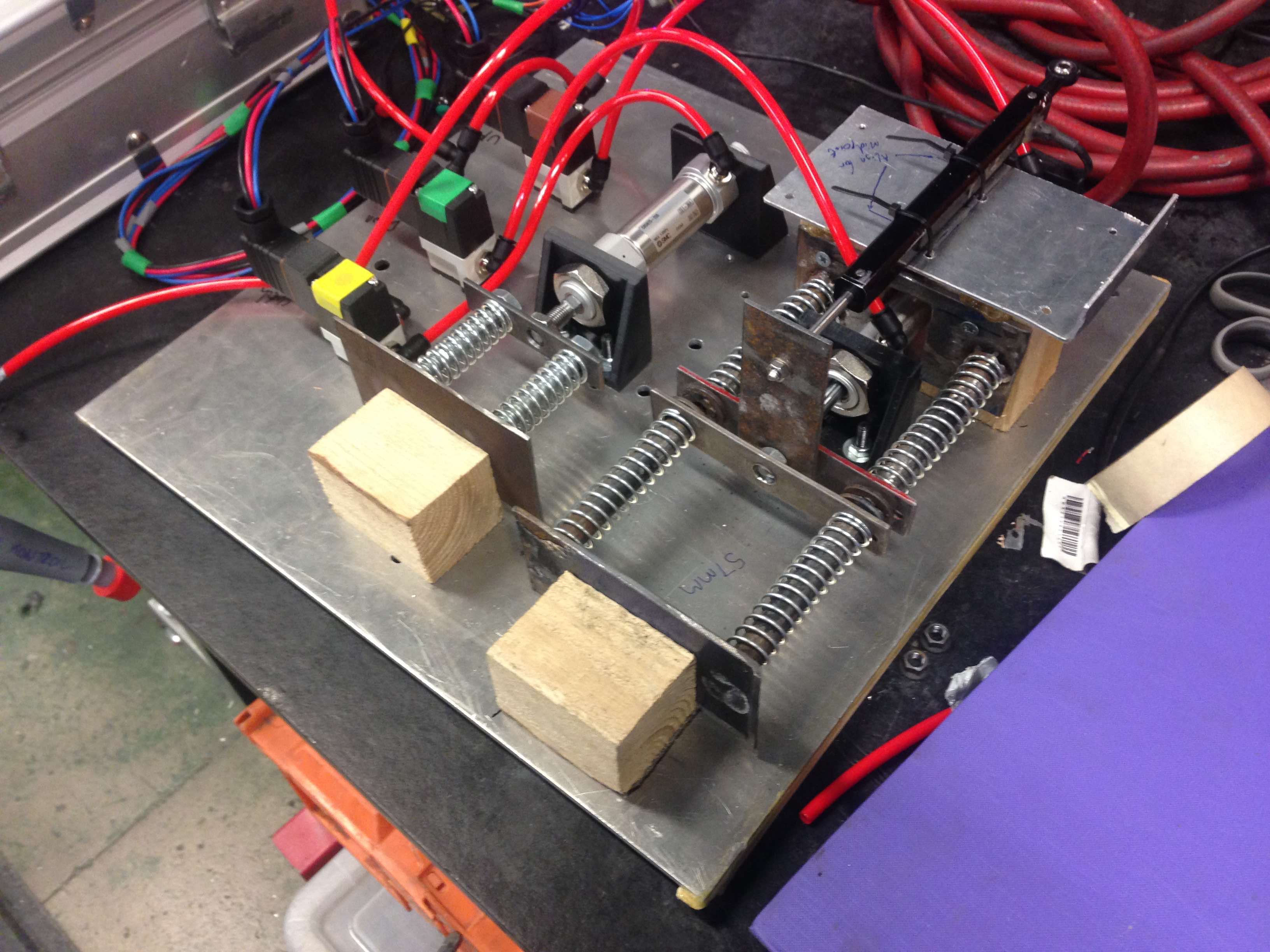
Figure 3 - NI myRIO and custom 12 volt relay boards:
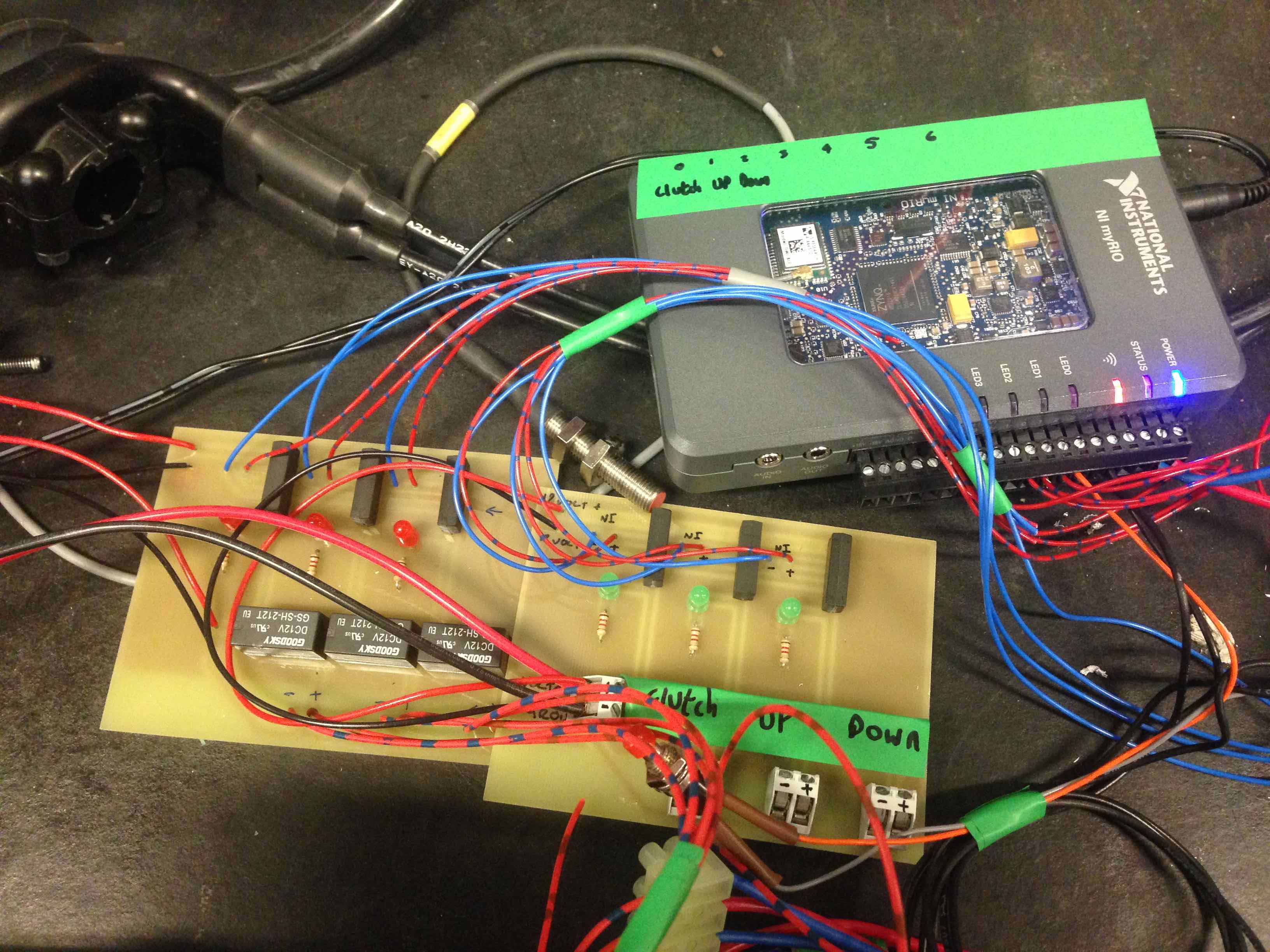
Figure 4 - Pneumatic system engine based test bench:

Figure 5 - Pneumatic system engine based test bench:
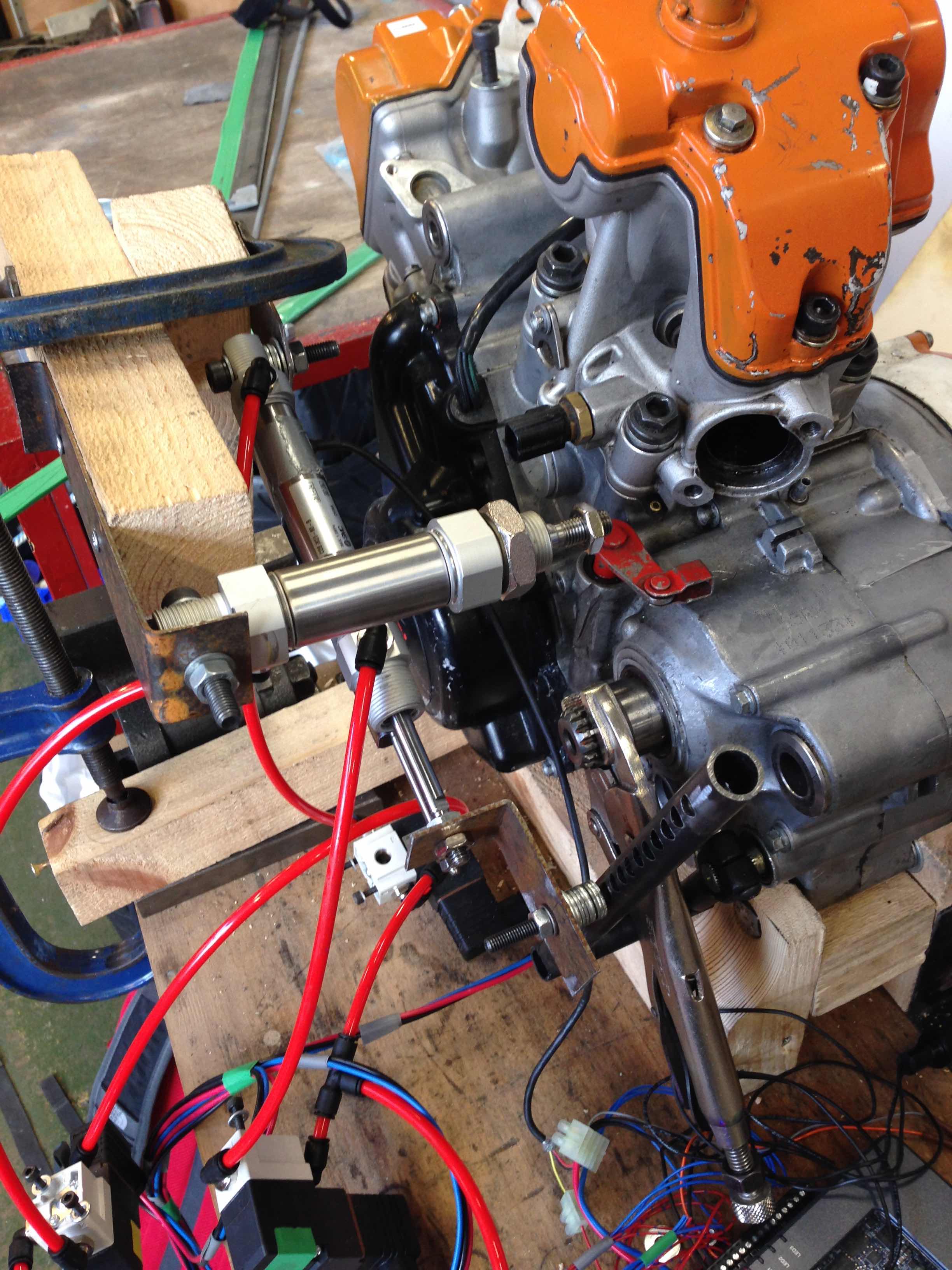
Figure 6 - Aprillia SXV 550 clutch mechanism:
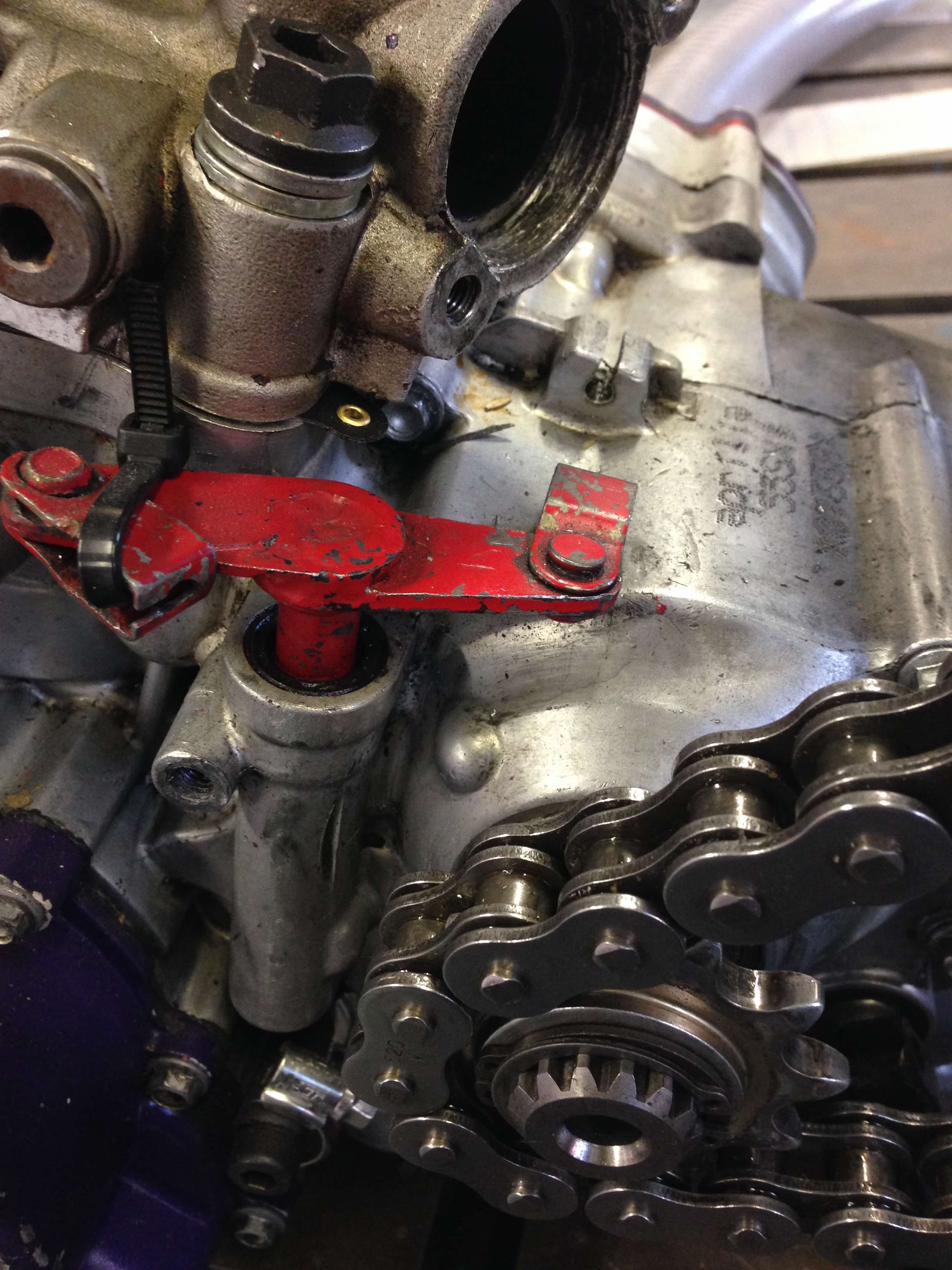
Figure 7 - Aprillia SXV 550 gear selection mechanism:

Spring test bench slow motion video:
Overdrive UK feature on Cardiff Racing - Shifter featured at 2:09:
LabVIEW block diagram:
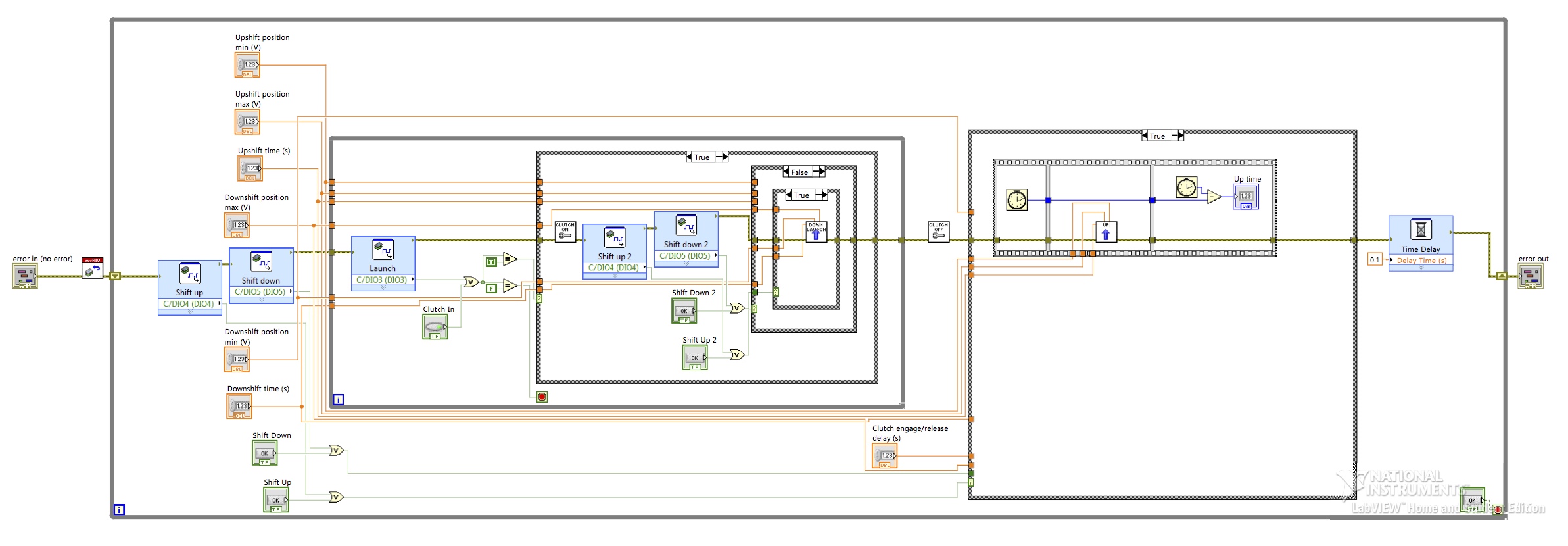
The system is currently in a beta phase with final optimisation of the code taking place before implmentation on the car for pre-event testing.
To this point construction time of the system is approximately 8 weeks part time.
A stated previously, the system would benefit from further optimisation of the labview code to improve repeatibilty of operation and intoduce further safeguards incase of system malfunction. Some careful modification to the pneumatic hardware would also help reduce the mass of the system.
